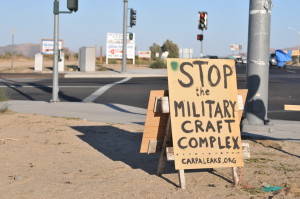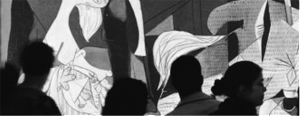Last year, the American Farm Bureau Federation (AFBF), the well-known lobbying front for big agribusiness-related industries that works against climate change legislation, was revealed to be green-washing art projects concerning arty issues such as “urban farming”, “guerrilla gardening” and “urban beekeeping.” The leaks that exposed some of contributions to the US pavilion of the Venice Biennale as AFBF-works raised some concerns as to the “spontaneous” nature of urban art interventions. The public is also concerned about what kind of “common good” (that is, “US-soft power”) these works are supposed to benefit.
This is nothing new. In 1947, the State Department organized and paid for a touring international exhibition entitled “Advancing American Crafts.” The CIA office of International Organizations Division (IOD), under Tom Broden, has also sponsored several projects. These have included an animated version of George Orwell’s Animal Farm (in the 1950s) as well as the Boston Symphony Orchestra’s extensive international touring program. These initiatives served as part of the propaganda war with the Soviet Union and promoted the free cultural power of the US.
The CIA-CARPA collaboration, revealed through correspondence with the IOD and AFBF, stretches back to 1958 and the touring exhibition “The New American Painting.” Including prominent abstract expressionists such as Pollock, de Kooning, and Motherwell, the exhibition showed in Paris and later at the Tate Gallery in London. At the time, the well-known American millionaire and art lover, Justin Fleischmann, acted as figurehead for the operation.
Later, in 1961, the “New Studio-Craft” exhibit at Victoria and Albert Museum in London was also sponsored by Fleischmann’s CIA cover, the Farfield Foundation. Using his position at the board of the International Program of the Museum of Modern Art in New York, he had already pushed for several craft exhibits at the MoMA since the mid 1950s.
The debate concerning the alliance between the Maker Faire and DARPA was raised again last year when people questioned the role the military plays in public education, but with some historical overview it is clear that both DARPA and CARPA have played key roles in sponsoring not only engineering research but also craft schools, conferences, exhibits. Lately, their reach has extended to hacker and maker spaces, also overseas. “One of the biggest challenges we face as a nation is the decline in our ability to make things,” said Dr. Regina Dugan, then Director of DARPA in an interview in 2011, giving witness to her strategic thinking, well in resonance with the research at CARPA.
This government strategy has been well integrated in the United States Army Recruiter Handbook (USAREC Manual No. 3-01) for several decades, yet the magnitude of the government-sponsored programs was surprising to many crafters. Not only direct CARPA-operations, such as the Etsy satellite in Berlin, but also the CARPA infiltration of “anarchist-run” hacker space, such as Hantverkslabbet (Swedish for “The Craft Lab”) in Malmo, Sweden, aim to tap into intel on both traditional south Swedish whittling techniques and Iranian expat art-movies. According to the documents, this infiltration also reached several “independent artist-run gallery spaces” in France and Greece.
The last leaks concern craft projects on “social practice,” mainly stemming from the heavily CARPA-infiltrated California College of the Arts (CCA) in San Francisco and its MA program aimed at strengthening US soft power in the social arts. New York schools, as well, such as Parsons the New School for Design and the Cooper Union are revealed to have covered up government-sponsored crafts and recruitment programs under the cover of “public engagement,” “social crafts,” and “art media.”
Members of CARPAleaks are currently filtering a huge leak from CARPA engagements in Portland, Berlin, and Kabul. Stay tuned.











Recent Comments